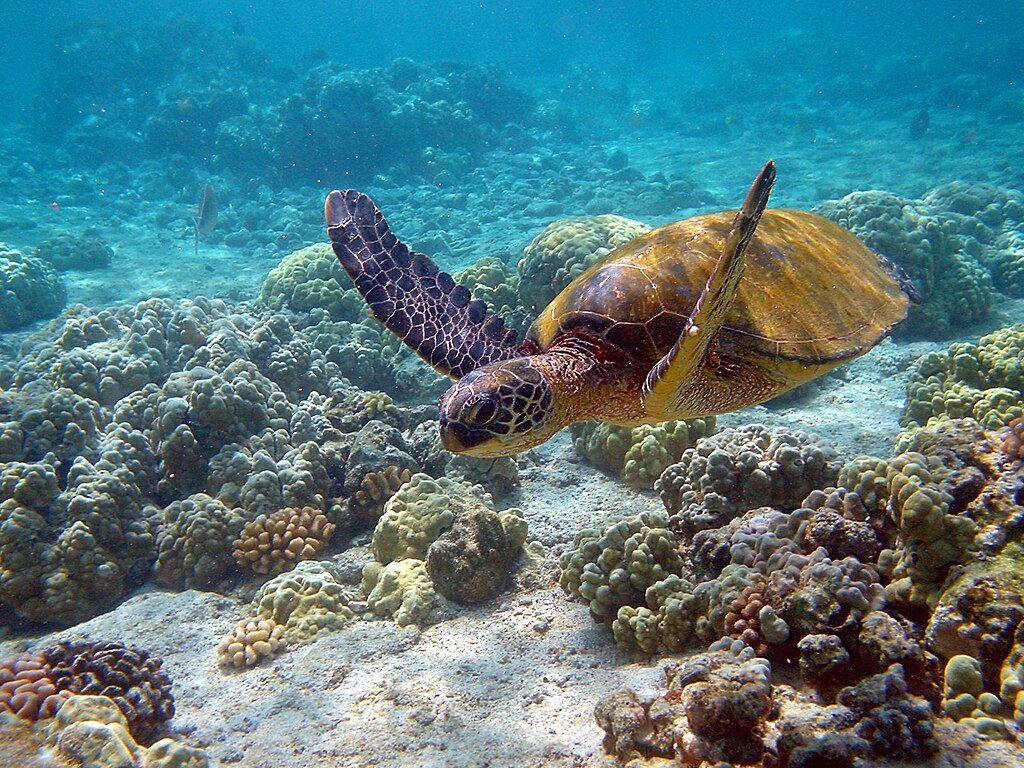Sea turtles embark on epic journeys across the vast oceans, traversing thousands of miles with astonishing precision. From their earliest days as hatchlings, sea turtles exhibit an extraordinary ability to navigate, relying on environmental cues to guide their movements across entire ocean basins. Recent studies have provided compelling evidence that sea turtles use the Earth’s magnetic field to orient themselves, a phenomenon known as magnetoreception.
Magnetic Maps: A Turtle’s GPS

Young sea turtles instinctively move toward the open sea upon hatching, a crucial survival mechanism that prevents them from being easy prey near shorelines. Early studies revealed that these juveniles use the Earth’s magnetic field as a guide. This geomagnetic sense helps them maintain their course, even after they swim beyond visible landmarks.
Research has shown that different oceanic regions have distinct magnetic signatures, characterized by unique intensities and inclinations of the Earth’s magnetic field. Young turtles are able to detect these variations and adjust their swimming direction accordingly, allowing them to stay on course during migration. Over time, juveniles develop what scientists call ‘magnetic maps’—an internalized representation of the magnetic topography of their surroundings, which aids them in homing towards specific feeding and nesting sites.
Evidence of Magnetic Navigation in Adult Sea Turtles

While magnetoreception has been well-documented in hatchlings and juveniles, studying the navigation of adult turtles has been more challenging due to their large size. However, a groundbreaking study by Luschi et al. has confirmed that adult sea turtles also rely on geomagnetic cues for homing. In this experiment, researchers captured adult female green turtles from a remote island in the Indian Ocean and transported them 100–120 km away before releasing them.
By tracking the turtles’ return journeys using satellite telemetry, researchers observed that while all groups eventually reached the nesting site, those exposed to magnetic disruption took more convoluted routes than the control group. This finding suggests that adult turtles, like juveniles, depend on geomagnetic cues for navigation but can compensate using other sensory inputs when necessary.
Iconic Navigators: Loggerheads

Loggerhead turtles, in particular, are known for their extensive travels, returning to specific feeding spots and nesting grounds year after year. Researchers have discovered that these turtles possess an internal magnetic map, enabling them to recognize distinct magnetic signals associated with important destinations. This ability to ‘memorize’ magnetic landmarks allows them to navigate with remarkable accuracy, much like how we use a GPS. It’s as if each region of the ocean has a unique magnetic fingerprint that guides turtles back to familiar waters.
How Magnetoreception Works in Turtles

The exact mechanisms behind turtle magnetoreception remain an active area of research. Scientists believe that specialized cells containing magnetite—a magnetic mineral—may allow turtles to detect subtle variations in the Earth’s magnetic field. This biological compass could function similarly to how birds and other migratory animals navigate long distances.
Additionally, sea turtles appear to use magnetic field intensity and inclination angle to determine their position, similar to how a GPS system operates. When turtles encounter a magnetic field corresponding to a known location, they adjust their swimming behavior to maintain their migratory course.
Multiple Navigational Cues

While magnetoreception plays a crucial role in turtle navigation, it is unlikely to be their sole method of orientation. Studies suggest that sea turtles also rely on celestial cues, wave patterns, and possibly even olfactory signals to reach their destinations. The redundancy of multiple navigational systems ensures that turtles can complete their migrations even if one method is compromised.
For example, some researchers propose that turtles use the position of the sun or the pattern of ocean swells as secondary navigational tools. Similarly, the ability to recognize chemical cues in water might help them identify specific coastal regions, much like salmon use olfactory memory to return to their natal rivers.
Conservation Implications: Protecting Navigational Cues

Understanding how sea turtles navigate has important conservation implications. Many turtle species are endangered due to habitat destruction, climate change, and accidental bycatch in fishing nets. Disruptions to Earth’s magnetic field—whether from human-made structures, ocean drilling, or climate-related shifts—could potentially interfere with turtle migration, leading to population declines.
By further studying how turtles use geomagnetic information, conservationists can develop strategies to mitigate these risks. For example, artificial lighting on beaches can disorient hatchlings, causing them to stray inland instead of heading toward the ocean. Knowing that turtles rely on magnetic cues can help researchers design conservation programs that minimize human impact on their natural navigation systems.
Conclusion

The discovery that sea turtles use the Earth’s magnetic field to navigate adds another layer to our understanding of these ancient mariners. From hatchlings to adults, turtles exhibit remarkable spatial awareness, demonstrating an ability to traverse entire ocean basins with precision. While much remains to be discovered about the exact mechanisms underlying magnetoreception, ongoing research continues to shed light on the navigational prowess of sea turtles.
With conservation efforts and further scientific exploration, we can ensure that these incredible creatures continue to roam the world’s oceans for generations to come.
Sources: Current Biology & Nature

Jan loves Wildlife and Animals and is one of the founders of Animals Around The Globe. He holds an MSc in Finance & Economics and is a passionate PADI Open Water Diver. His favorite animals are Mountain Gorillas, Tigers, and Great White Sharks. He lived in South Africa, Germany, the USA, Ireland, Italy, China, and Australia. Before AATG, Jan worked for Google, Axel Springer, BMW and others.


